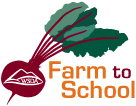|
The U.S. Department of Agriculture (USDA) recently released SP 01-2022, CACFP 01-2022: Questions and Answers for Child Nutrition Programs Emergency Procurement Due to Supply Chain Disruptions.
This memo provides clarifications on use of emergency procurements and operating Child Nutrition Programs during school year 2021–22. The noncompetitive procurement method in 2 CFR 200.320(c) may be used when a public exigency or emergency prevents sponsors from conducting a competitive procurement. This is an exception to full and open competition and USDA and OSPI approval is not required.
Using Noncompetitive Procurement
Use of the emergency noncompetitive procurement method is allowed only during the actual public exigency or emergency circumstance. Plan to begin the process of competitively procuring goods and services to transition back to competitively procured contracts as the emergency circumstances cease to exist.
Documentation remains key when using the noncompetitive procurement method. The following items are examples that would support the documentation requirements:
- Documentation showing that the distributor, processor, or other supplier cancelled food or supply contracts, deliveries, or orders;
- Documentation showing the distributor, processor, or other supplier is no longer able to provide food as ordered, or failed to consistently deliver goods.
Sponsors are allowed to piggyback onto existing contracts as long as the contract language includes a provision to allow “piggybacking” to avoid a material change that would require a contract amendment.
Please review the full memo for more details.
Procurement Resources
Procurement questions? Please email the CNS Procurement Inbox.
Supply chain questions? Please contact your School Meals Program Specialist.
Office of Superintendent of Public Instruction bulletin Bulletin 080-21: SY20-21 Pandemic EBT Administrative Funds for Eligible Local Education Agencies provides information about payment of funds in November 2021.
Steps to Take
All eligible Local Education Agencies (LEAs) are scheduled to automatically receive these funds that will process of November 15, 2021, for payment the end of November.
To decline P-EBT Administrative funds LEAs must contact Hydie Kidd by November 8, 2021.
Bulletin Details
The COVID Relief Response Act designated federal funds to be sub-awarded to LEAs to assist with the costs associated with administrative support of P-EBT at the local level.
The payment will be initiated in the Washington Integrated Nutrition System (WINS) and funds will be paid to eligible public school districts with the November 2021 apportionment. Eligible private schools will receive funding through Agency Financial Reporting System. No action is required by the LEA.
The bulletin provides details including the funding matrix, allowable costs, and revenue/reporting codes.
Questions? Please email Hydie Kidd, Fiscal Supervisor.
The Washington Department of Health (DOH) recently released updated guidance on K-12 COVID-19 Requirements for Summer 2021 and the 2021–2022 School Year. Updates in this version reflect recently released Center for Disease Control's (CDC) recommendations for schools and seek to achieve two primary goals:
- Minimize transmission of COVID-19 among students and staff in K–12 schools and to their families and broader community.
- Maximize in-person instruction.
Summary of Changes
- Updated K-12 school outbreak definition in alignment with CDC.
- Inclusion of outdoor classrooms in K-12 close contact exception definition.
- References added for new Symptom Decision Tree and Contact Tracing Checklist for K12 Schools and COVID-19 Contact Tracing Guide and FAQ for K-12 Schools tools.
Overview of Prevention Measures
For SY 21–22, schools must plan to provide full time in-person education for all interested students with the following required mitigation measures: face coverings/masks, physical distancing, improving ventilation, handwashing and respiratory etiquette, cleaning and disinfecting, staying home when sick and seeking evaluation, testing as indicated, contact tracing in combination with quarantine and isolation, responding to cases of COVID-19, and meeting the reporting requirements to public health.
Resources
USDA Food and Nutrition Service (FNS) published a technical correction in the Federal Register. This correction to amends Child and Adult Care Food Program (CACFP) meal pattern regulations. Corrections include updates to meal pattern tables and associated text to reflect ounce equivalents for grains served in the CACFP.
Implementation of ounce equivalents crediting began on October 1, 2021.
Note: Pre-school and infant meals served in the National School Lunch Program and School Breakfast Program also follow CACFP meal pattern requirements. Technical corrections were made to the following regulations: 7 CFR 210.10; 7 CFR 220.8; and 7 CFR 226.20.
The Federal Register publication is available online at: Federal Register: CACFP Meal Pattern Revisions Related to the Healthy, Hunger-Free Kids Act of 2010; Technical Amendments and govinfo.gov documents.
The USDA will update meal pattern tables will be available online shortly. OSPI Child Nutrition Service updated meal pattern charts earlier this year.
Resources
The U.S. Department of Agriculture (USDA) released several nationwide waivers relating to the operation of the Summer Food Service Program (SFSP) during School Year (SY) 21–22. Federal Child Nutrition Program sponsors planning to support schools experiencing unanticipated closures, such a COVID-19 outbreak or extreme weather events, may utilize the Summer Food Service Program (SFSP).
Summary of Requirements:
- These waivers are only applicable when an entire school closes and no remote or hybrid learning options will be provided.
- Community Sponsors must have operated SFSP during FY 20–21.
- Community Sponsors interested in operating SFSP during an emergency school closure must submit a Meal Distribution Plan when an unanticipated closure occurs, if utilizing any of the nationwide waivers.
- If eligible, a FY 21–22 SFSP WINS application must be submitted.
Please review the SY21–22 SFSP Operation During Unanticipated School Closures Reference Sheet for more details.
Questions? Please email the Summer Meals inbox.

OSPI Child Nutrition Services is partnering with the Washington State Department of Agriculture (WSDA) on a new grant opportunity!
The Farm to School Purchasing Grant is available to schools, child care centers, and summer meal program operators for the purchase and use of Washington-grown foods in child nutrition programs.
Application Details
Applications will be available soon and funding will be for January 2022 – August 2022. Funding levels will be based on annual meal participation rates.
Join Us for a Webinar!
Join CNS and WSDA for information on how to apply for the grant!
Register for the How to Apply for the Farm to School Grant Webinar
Date: Wednesday, November, 3
Time: 1:30–2:30 pm PT
Questions? Visit the WSDA Farm to School Purchasing Grants website for more information.
|
October Building Data (OBD) must be collected from all traditional National School Lunch Program (NSLP), School Breakfast Program (SBP), and Special Milk Program (SMP) sponsors, even if they are currently operating the Seamless Summer Option (SSO).
Enter OBD for All School Sites
-
Sponsors currently operating the NSLP/SBP
Follow the steps outlined in the NSLP/SBP MDP Sponsor Checklist to ensure their renewal application is complete. October Building Data should be entered with the October claim for reimbursement. The NSLP and SBP Renewal Bulletin provides details on the renewal process.
-
Sponsors currently operating the Seamless Summer Option (SSO)
All Local Educational Agencies (LEAs) must submit their NSLP/SBP renewal application and create School Year (SY) 21–22 NSLP schedules for ALL school sites to ensure accurate OBD is collected for SY 21–22. This includes school sites that may or may not be operating Summer programs this school year that would normally operate NSLP. When submitting the site calendar, sponsors should:
- Add a NSLP schedule for one day, October 31, 2021, including estimates of the Free, Reduced-Price, and Paid participation in the schedule.
- With the exception of October 31, ensure the start date for the NSLP schedule does not overlap with the SSO schedule.
- When submitting the October claim for reimbursement, zeroes (0) should be entered for the NSLP/SBP meal counts. An error message will populate in the claim – please disregard this error message.
- The applicable SSO Renewal Checklist provides additional details on the renewal process.
-
Sponsors currently operating the SMP
Follow the steps outlined in the Special Milk Renewal Bulletin to ensure their renewal application is complete. OBD should be entered with the October claim for reimbursement.
Questions about how to enter OBD in SY 21–22? Please contact your School Meals Program Specialist.
Verification Process
Verification is the process of confirming free and reduced-price meal eligibility based on an application. The verification process begins each year on October 1 and concludes November 15. Results of the verification process (Verification Summary Report) must be submitted to Child Nutrition Services by February 1, 2022.
Public school districts, private schools, and residential child care institutions that determine eligibility for meals using meal applications must conduct verification.
Verification Method Reminders
- New Local Educational Agencies (LEAs) must use the 3% focused method.
- Since the Verification Summary Report (VSR) was not collected in SY 20–21, LEAs with a 20% or greater non-response rate from verification in school year 2019–20 must use the 3% focused method.
Sponsors Who Collect Meal Applications
All sponsors who determine eligibility for meals using meal applications should move forward with the annual verification process for SY 21–22.
Reminder: Last year we shared that the Direct Verification Process is discontinued. We encourage sponsors to familiarize themselves with the Rolling Verification process to help reduce workload.
Additional information on verification materials and timelines are outlined in our 9/27 Verification article.
Questions about the verification process? Please contact your School Meals Program Specialist.
The Institute of Child Nutrition (ICN) is the only federally funded national center dedicated to applied research, education and training, and technical assistance for child nutrition programs.
Register for a Webinar!
The October STAR webinar will feature the USDA Office of Community Food Systems (OCFS). The OCFS will promote the Farm to School Grant Program and share some current resources that are available to help child nutrition operators incorporate local foods in their programs.
Register for Strategies for Farm to School Resilient Local Food Systems
Date: Thursday, October 28, 2021
Time: 12:00-1:00 pm PT
During this webinar, attendees will:
- Review the Farm to School Grant Program.
- Identify resources that are available to help child nutrition operators incorporate local foods in their programs.
- Recall the strategies communities with strong food infrastructure and existing relationships utilized to respond and adapt to current challenges.
- Identify strategies and tips for what works best for getting meals to students and families while supporting local producers.
A continuing education certificate will be available after completion of the webinar.
After registering, you will receive a confirmation email containing information about joining the webinar. If you are unable to attend the LIVE webinar, there will be a recording of the webinar available on our website 24-48 hours after the live webinar.
You can find STAR Webinars on the new iLearn platform.
USDA's Team Nutrition recently released a new School Meals Grab n' Go: Quick tips to improve your meal service Newsletter!
The newest newsletter reviews ideas for Making Last-Minute Substitutions to Your School Menu. Discover how different documentation methods can help you meet meal pattern requirements and document retention!
Subscribe to receive updates from USDA Food and Nutrition Service.

Standard USDA food deliveries are wrapped and stacked on pallets no higher than approximately five feet and left at your loading dock for you to remove. The carrier will drop pallets at dock or just inside the threshold of your facility if the entrance can accommodate. If there are delivery discrepancies or damages, you may return those cases with the driver.
Accommodations
Any request for removal of product from the pallet or asking the driver to enter the facility will require additional cost and must be arranged in advance. Additional delivery accommodations are estimated to be $0.65 per case, with a minimum of $40.
To update your delivery contact information or request additional delivery services, please complete the Delivery Updates Form.
Resources
Questions? Please email the Food Distribution Office or call 360-725-6204.
|
|